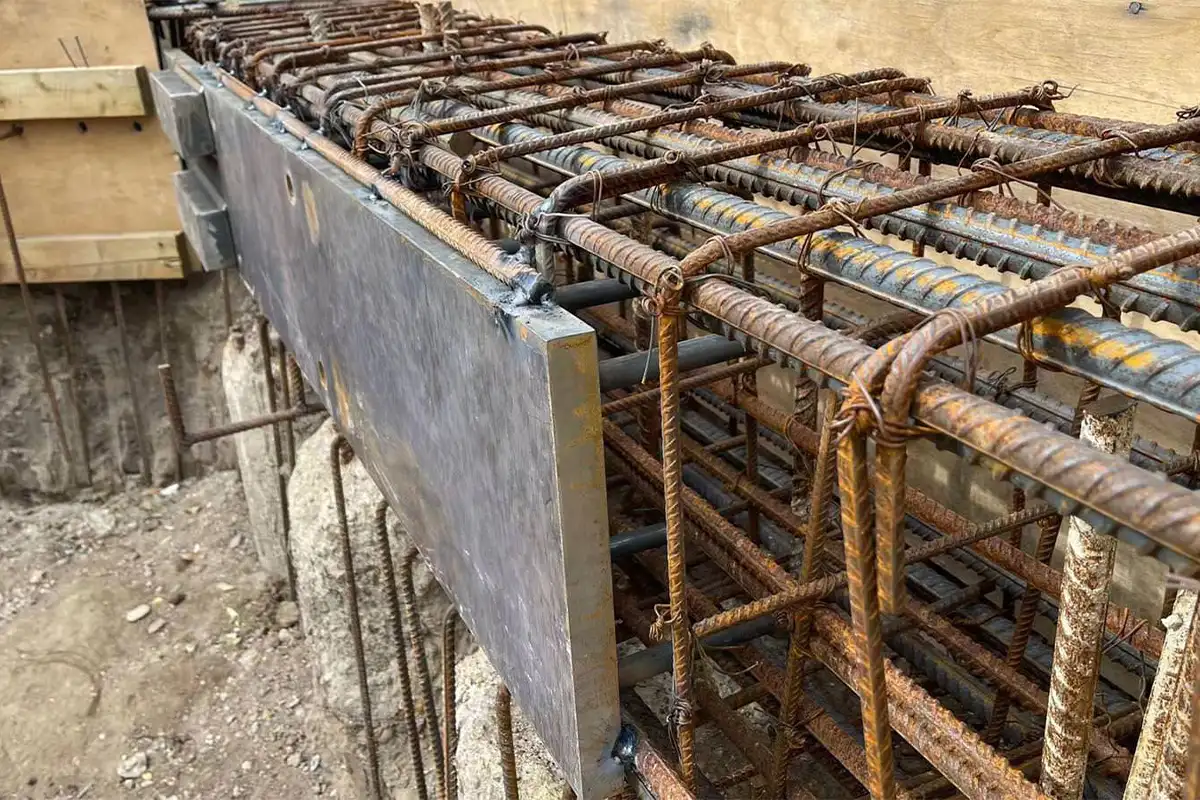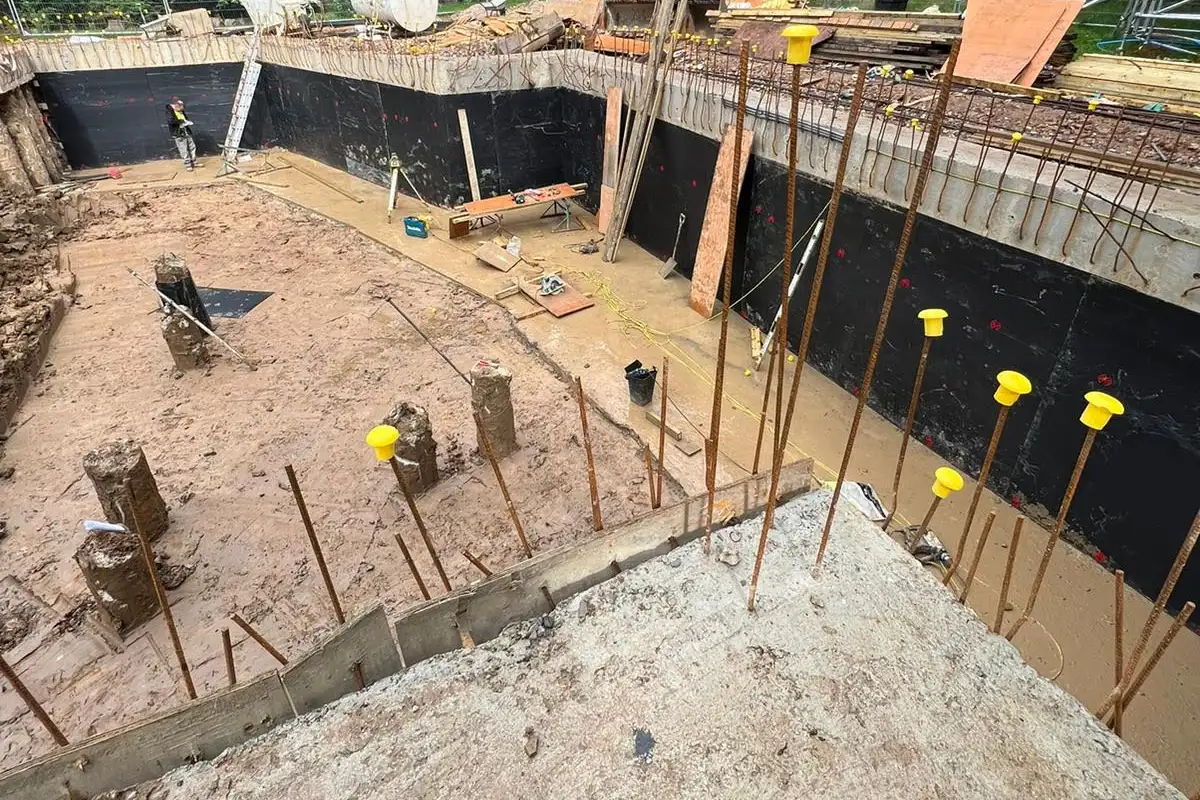Retaining Walls
Retaining walls are crucial to the integrity of your building, you don’t want to approach their design or construction lightly. Protect your home with the retaining wall service from AC Design Solutions.
What is a retaining wall?
External retaining walls An external retaining wall is a rigid wall used primarily to retain soil, allowing the construction of different levels of ground typically in a garden.
The main purpose of an external retaining wall is to prevent soil erosion while creating an outdoor space or flower bed where it might otherwise not be possible.
These vertical structures are designed to prevent the retained materials from sliding or collapsing, helping support the shape of the terrain or to landscape a garden built on a slope.
Retaining walls can be independent structures, or they can be part of the wider structure of an existing building.
Internal retaining walls
Internal retaining walls are typically used for both temporary and permanent support during basement construction.
A professionally designed and installed internal retaining wall will protect your home and any surrounding properties for years to come, from soil erosion or earth movement that may cause structural damage.
The different type of retaining wall we can help with:
Gravity Retaining Wall
Gravity retaining walls rely on their own weight to resist the pressure of the soil behind them. They are typically made of concrete or stone and are suitable for relatively low walls. Gravity walls are often used for landscaping purposes and can add an aesthetic appeal to any outdoor space.
Cantilever Retaining Walls
Cantilever retaining walls are designed with a horizontal base and a vertical wall. They use a combination of the weight of the wall and a footing to counteract the pressure of the soil. These walls are commonly made of reinforced concrete and are suitable for medium to high walls.
Sheet Pile wall
Sheet pile retaining walls are made of steel, vinyl, or wood planks that are driven into the ground. They are commonly used in areas with limited space and are effective in preventing soil erosion. Sheet pile walls are often used in waterfront areas and construction projects near bodies of water.
Cotnigous pile Wall
A contiguous pile wall is a construction method involving closely spaced vertical piles that provide excavation support and prevent water ingress. These are often used in deep excavations and basements. We will help with designing the sub and super structure and provide loads to geo technical engineer to design the pile.
Contact us
Until you need a retaining wall, you may not appreciate the important job they do.Building retaining walls can be a tricky undertaking. They need to be strong enough to hold back the retained material, or capable of supporting vertical loads such as existing walls in your property.
You also need to take into account groundwater levels and design your retaining wall with suitable waterproofing, including a damp proof course, as well as ensuring sufficient drainage to allow water to drain away.
If the wall isn’t built properly it can bulge, crack or even lean due to excess horizontal pressure.
Inadequate construction can lead to bulges, cracks, or leaning due to horizontal pressure. For walls over one meter, trust AC Design Solution engineers. From home renovations to basement extensions, our experienced team can offer on-site assistance and in-house rebar shop drawings, setting us apart from competitors providing a one stop shop.
Retaining wall design process
Site Evaluation
The first step in the design process is to evaluate the site where the retaining wall will be constructed. Factors such as soil type, slope, and water drainage need to be considered to determine the appropriate design and materials for the wall.
Engineering Analysis
Once the site evaluation is complete, an engineering analysis is conducted to determine the load-bearing capacity of the soil and the required height and thickness of the wall. This analysis ensures that the wall will be able to withstand the pressure from the soil behind it.

Retaining wall design types
Reinforced Retaining Walls:
Reinforced retaining walls are designed with additional reinforcement materials such as steel bars or geogrids. This reinforcement provides additional strength and stability to the wall, allowing it to withstand higher loads and pressures. Reinforced walls are commonly used in areas with soft or loose soil.
Modular Block Retaining Walls
Modular block retaining walls are constructed using precast concrete blocks that fit together like puzzle pieces. These walls are easy to install and can be built in various shapes and sizes. Modular block walls are a popular choice for residential landscaping projects due to their versatility and aesthetic appeal.
Gabion Retaining Walls:
Gabion retaining walls are constructed by filling wire baskets with rocks or other natural materials. These walls provide a rustic and natural look and are often used in landscaping projects. Gabion walls are flexible and can adapt to uneven terrain, making them suitable for a variety of applications.
Who can design a retaining wall?
Designing a retaining wall requires expertise in civil engineering and structural design. It is recommended to consult with a professional engineer, They will have the knowledge and experience to assess the site conditions, analyse the load-bearing capacity of the soil, and design a structurally sound retaining wall that meets all safety requirements. Lucky we are both Civil Engineers and Structural Engineers.
Does a retaining wall need a foundation?
Yes, a retaining wall needs a foundation to ensure stability and prevent failure. The foundation provides a solid base for the wall and helps distribute the weight of the wall and the soil behind it. The type and depth of the foundation will depend on various factors such as the height of the wall, the type of soil, and the overall design of the wall. This is where we will be able to determine the appropriate foundation requirements based on the specific project.
Do I need drainage behind a retaining wall?
Yes, proper drainage behind a retaining wall is crucial to prevent water buildup and potential damage to the wall. Without proper drainage, hydrostatic pressure can build up behind the wall, causing it to crack or fail. Drainage systems such as perforated pipes, gravel backfill, and weep holes are often installed behind the wall to allow for the proper flow of water away from the wall. The specific drainage requirements will depend on the site conditions and the design of the wall.



